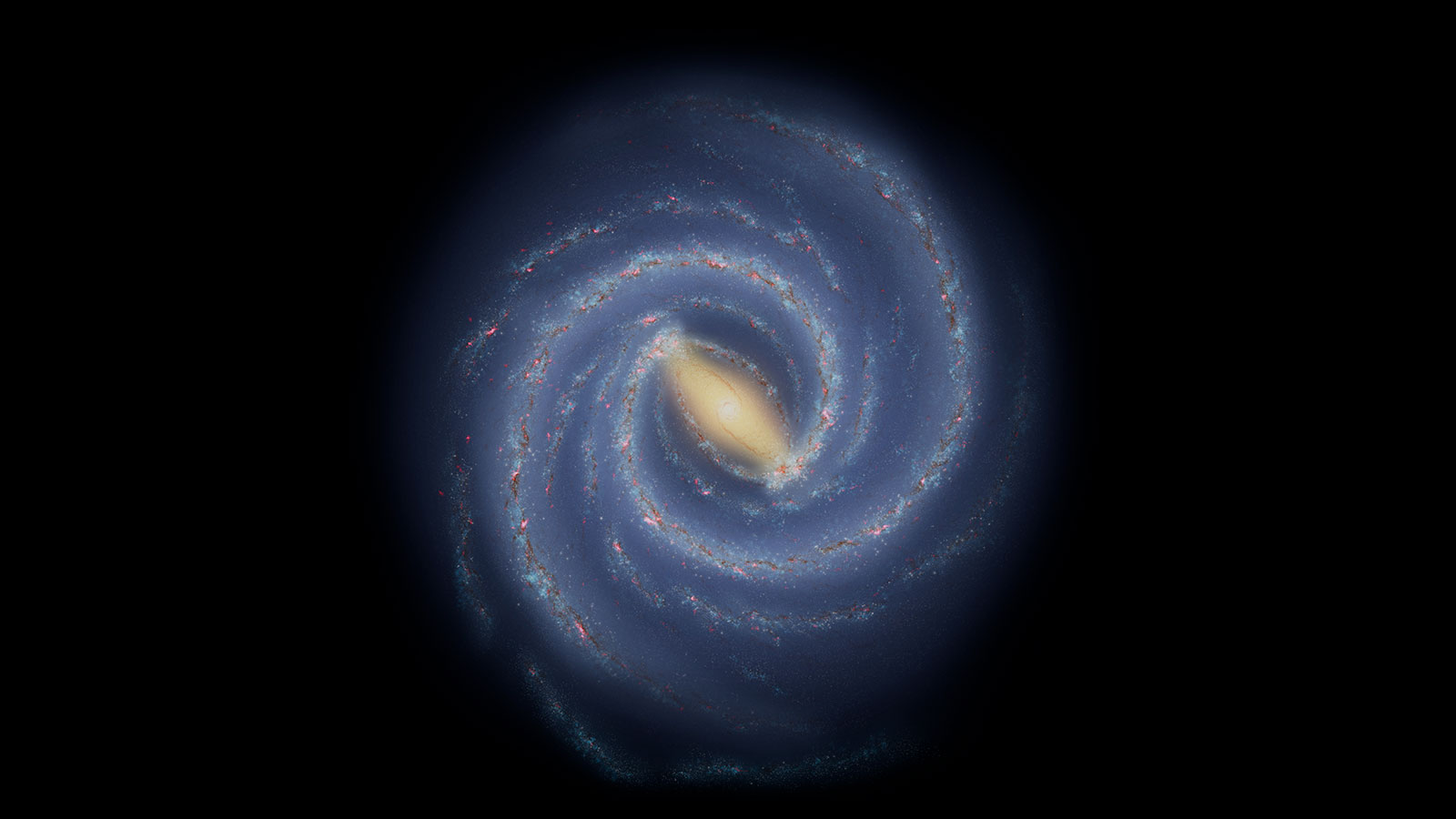Our Milky Way galaxy's stunning spiral structure appears to be an anomaly. But why?
Some galaxies meant to be spirals might've been smoothed-out into clumpy ellipticals.

If you were to spring from Earth so high you could glance down at the entire Milky Way, our home galaxy would look like a spinning pinwheel. In it, some 100 billion stars are sprinkled across some 100,000 light-years, accompanied by unfathomable amounts of gas and dust. Together, these galactic components swirl around in a stellar disk, spilling into four giant spiral arms emanating from the galaxy's blinding center, the home of a supermassive black hole.
We've come to really identify our galaxy with its spiral structure (although its exact number of galactic arms is still being debated). Yet, astronomers have long puzzled over why spiral galaxies such as ours appear to be strikingly scarce in our crowded pocket of the universe. The pancake-like supergalactic plane in which the Milky Way is embedded, spanning 1.4 billion years in width, is instead dominated by clumpy, somewhat rounded, galaxies known as ellipticals.
Now, a new supercomputer simulation of the 13.8 billion-year-long evolution of the universe suggests this scarcity is thanks to naturally occurring, frequent interactions among galaxies in the supergalactic plane that smooth out any potential spiral arms, leading to formation of the elliptical galaxies we see.
Related: Listen to a symphony for the Milky Way, made from real NASA data (video)
Stars in spiral galaxies like the Milky Way float around their galaxy centers in mostly circular orbits. However, when two galaxies of comparable mass are near each other, these ordered motions become disordered.
"The stellar orbits become reshuffled or randomized," Till Sawala, an astrophysicist at the University of Helsinki in Finland and co-author of a study on the findings, told Space.com. "This removes any ordered features, such as the appearance of a stellar disk, and therefore also removes the appearance of spiral arms."
The consequences of large galaxies merging together are also manifold. In addition to randomizing the orbits of numerous stars, consequent interactions can sometimes lead to a starburst as well, an event in which many new stars are born.
Breaking space news, the latest updates on rocket launches, skywatching events and more!
Additionally, the supermassive black holes that reside at the centers of most large galaxies "can get triggered — become active — during mergers," Sawala said. "This can change, and generally reduces the amount of new stars that the new galaxy can grow after the merger."
In turn, that makes the new galaxy even more elliptical.
Our Milky Way itself has grown over time by swallowing galaxies smaller than itself, known as dwarf galaxies. Due to their petite sizes, however, those galaxies did not influence the shape of our galaxy. Although, the Milky Way's predicted head-on collision with the Andromeda galaxy, expected to take place four billion years from now, may affect its structure at last. Andromeda boasts a similar, if not higher, mass than our galaxy exhibits.
As for whether a spiral galaxy that was stripped of its arms and transformed into an elliptical can return to its original shape, well, probably not, Sawala says.
Though galaxies that contain sufficient reservoirs of gas can form new stars, which may spread out into spiral arms, that wouldn't apply to elliptical galaxies, as they tend to be gas-poor.
"An elliptical galaxy will never turn back into a disk galaxy," Sawala said. "Because disk galaxies represent a state of order, and elliptical galaxies represent a state of disorder, it is generally not possible to reverse the process."
Sawala said his team is now working on improving the simulations to make them more accurate, so the researchers can further compare what we know of fundamental physical processes with telescopic observations of the local universe.
"This either lets us improve our understanding of what we observe, or — even better — discover a gap or error in our knowledge," Sawala said. "In the work we just published, we found that the simulation produced exactly what was observed."
"Personally, I am hoping that next time, we discover a real anomaly!"
This research was described in a paper published Monday (Nov. 20) in the journal Nature Astronomy.

Sharmila Kuthunur is an independent space journalist based in Bengaluru, India. Her work has also appeared in Scientific American, Science, Astronomy and Live Science, among other publications. She holds a master's degree in journalism from Northeastern University in Boston.

